Postdoctoral Fellowship
DEVELOPMENT AND EVALUATION OF DEEP-LEARNING ALGORITHMS FOR 3D+TIME IMAGE SEGMENTATION: APPLICATION TO ANIMAL AND PLANT MORPHOGENESIS
Developmental biology aims to better understand the morphogenesis. Image-based studies represent a method of choice therefore. From now on, microscopy techniques enable acquisition of temporal sequences of 3D images with a spatio-temporal resolution good enough to follow the embryo or organ development at sub-cellular scale [1]. While each still image allows to individualize each cell, the study of the temporal series may allow to extract the cell lineage and thus to recognize the cell division.
The acquisition of 3D+t series results in huge quantities of data. Obviously, manual analysis of such amount of images is not possible and sophisticated image analysis tools have been developed in the recent years for this particular goal [2, 3, 4, 5]. A first study [5] has already permits to extract the cell lineages for a dozen of embryos (of wild type ascidians), each acquisition being made of more than a hundred of 3D images: synthetizing the cell geometry information with the cell lineage allows then to get a compact structure describing the development of one individual. However, despites these tremendous progresses, analysis errors are still present and require manual tedious user interaction for curation, which prevents the analysis of such acquisitions at a larger scale, thus large scale population analysis.
On the other hand, machine learning based methods (and particularly convolutional neural networks) have demonstrated in the last year their ability to efficiently tackle a large variety of image analysis tasks. The goals of this fellowship are then to investigate machine learning based methods first for the analysis of 3D+t series of cellular membrane or wall images, and second for the population analysis of the extracted development scheme.
The ideal candidate must have a PhD degree in computer science, mathematics or physics. S/he should have skills in several of the following areas: Image Processing and Analysis, Data Sciences, and Machine Learning. S/he should be proficient in programming in C++ and Python languages. Previous experience in biological or medical imaging will be considered as an asset.
The position is opened for 2 years. Applicants must send by email a CV, a statement of interest, and 2 or 3 reference letters at christophe.godin@inria.fr (Mosaic project-team) and gregoire.malandain@inria.fr (Morpheme project-team). Applications will be reviewed as received. So the interested applicants are encouraged to apply as soon as possible.
Location: Inria-I3S Morpheme team, I3S, Sophia-Antipolis, France
Funding: This program will take place in the context of a collaborative project, named Naviscope, focused on the development of concepts and tools to interpret living form development and functioning.
Bibliography:
[1] PJ Keller, “Imaging Morphogenesis: Technological Advances and Biological Insights,” Science, vol. 340, no. 6137, pp. 1234168+, June 2013.
[2] R Fernandez, P Das, V Mirabet, E Moscardi, J Traas, JL Verdeil, G Malandain, and C Godin, “Imaging plant growth in 4-d: robust tissue reconstruction and lineaging at cell resolution,”Nat Meth, vol. 7, pp. 547–553, 2010.
[3] KR Mosaliganti, RR Noche, F Xiong, IA Swinburne, and SG Megason, “Acme: automated cell morphology extractor for comprehensive reconstruction of cell membranes,” PLoS Comput Biol, vol. 8, no. 12, 2012.
[4] G Michelin, L Guignard, U Fiuza, and G Malandain, “Embryo Cell Membranes Reconstruction by Tensor Voting,” in ISBI – International Symposium on Biomedical Imaging, Beijing, China, Apr. 2014, IEEE.
[5] Guignard, L., Fiuza, U.-M., Leggio, B., Faure, E., Laussu, J., Hufnagel, L., Malandain, G. Godin, C. and Lemaire, P. (2018). Contact-dependent cell communications drive morphological invariance during ascidian embryogenesis. bioRxiv 238741.
To apply for this job email your details to gregoire.malandain@inria.fr
